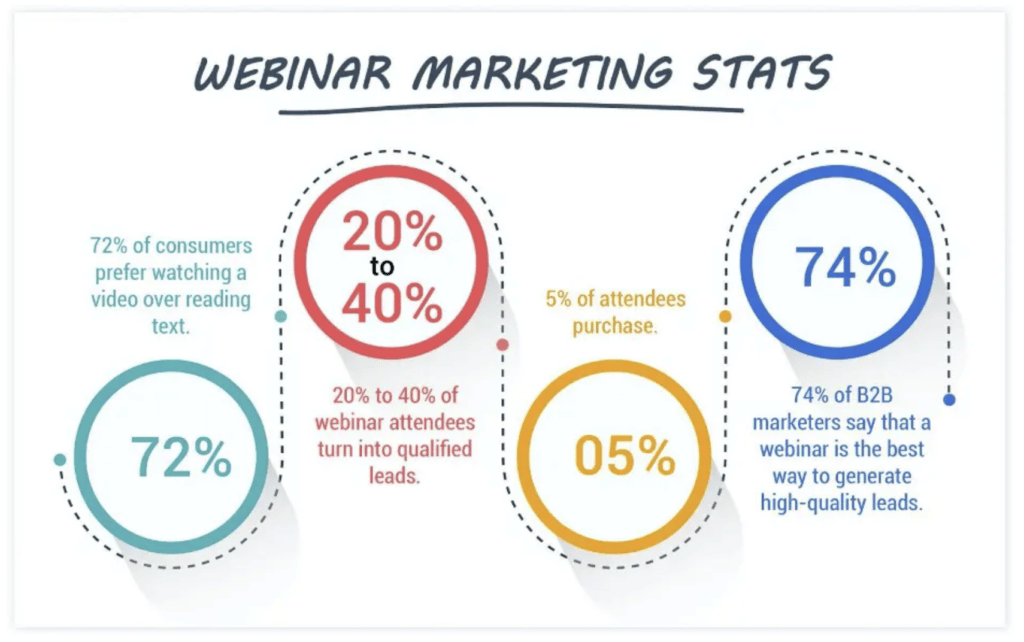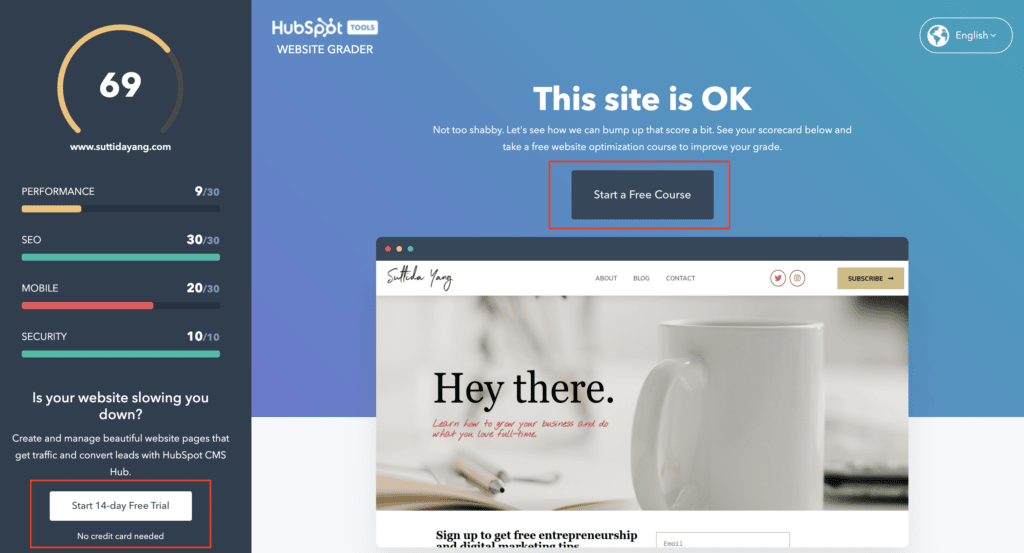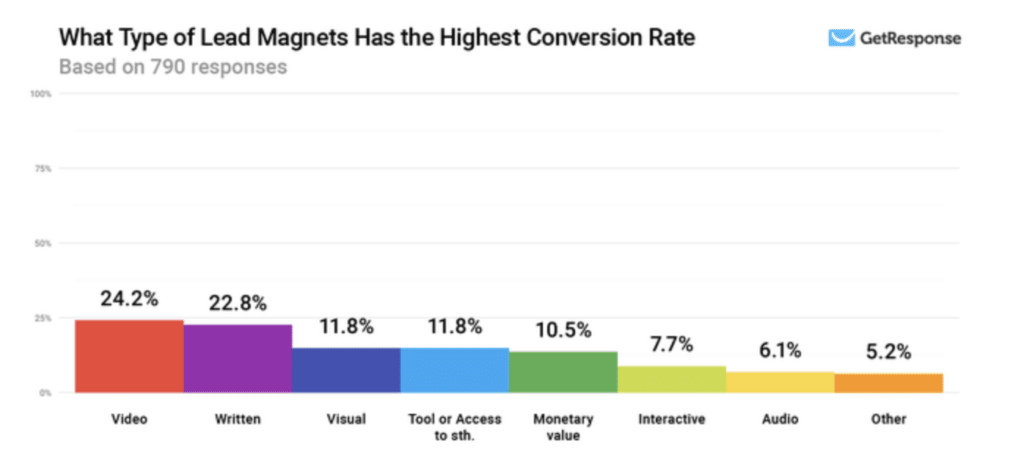What I love so much about developing, publishing, and distributing content is the fact that you’re able to authentically share out knowledge that is going to help somebody do their job better or even learn more about how they can solve the challenges they’re facing.
In the B2B world of marketing, lead magnets are a big driver behind generating leads and also contributing to revenue growth. Yes, this is definitely more of a longer-term play because your typical sales cycle could last anywhere from six to twelve months. However, if you’re producing content that actually meets your prospective customers wherever they are in the buying process, your chances of converting them into a paying customer is much higher.
Further, there are some strong opinions behind gated versus non-gated content; however, my take on that is to test both avenues and see which one works best for your business. There is a one size fits all approach here, so the best way to figure that out is to push the content out there and see what happens.
Before I dive into today’s blog post, let’s quickly highlight major stats as to why content is so important to the overall health as well as success of your business:
- 55% of business professionals claim that great storytelling is what helps them focus on and engage with content
- Content marketing is 3x more cost effective at lead generation than paid search
- 51% of content consumed on the Internet is driven by organic Google searches
- Email subscribers are nearly 4x more likely to share your content on social media
- Companies who blog consistently receive 67% more monthly leads than companies who don’t blog regularly
- The most successful B2B marketing teams spend 40% of their marketing budget on content marketing
1. Quizzes
Get interactive with your content by leveraging quizzes. Not only are you encouraging that people engage with your content, you can even have strong CTAs at the end of every quiz for them to learn more about your products/services. You can also gate the results to each quiz so that contact information is filled out prior to viewing them.
Here are key strategies to keep top of mind should you want to test out quizzes:
- Don’t make them too long.
- Make them fun with a business intent.
- Position the questions to be centered around your target market’s challenges.
- Provide tangible results that will entice people to get in touch with you.
- Promote via social ads and other media sites to drive traffic and engagement.
- Encourage participants to refer colleagues too.
2. Webinars
Did you know that 2–5% of webinar attendees make some sort of purchase, with 20–40% becoming warm leads, and that overall, 87% of businesses see them as an effective channel that yields positive returns?
The biggest lesson I’ve learned from webinars is the following:
- Just as you would do with your own blogging efforts, it’s important to present on a topic you are passionate about.
- Take time to develop your webinar presentation. Avoid using a ton of words on one slide. Be concise with the message you want attendees to walk away with.
- Make time to promote your webinar, which means putting in ad dollars too.
- Afterward, make sure that you follow up on the webinar with at least 4–5 emails to nurture attendees and those who missed it.
- Don’t be afraid to promote your webinar again, this time doing it as an “on-demand.”
After your webinar, you can take it a step further and launch a local workshop doing the exact same thing. The attraction for local workshops is being able to meet people who are interested in what you have to offer. My caution here is that you test and hone your content virtually first. Then you can justify running a more intimate local workshop.
In fact, here are some ideas for offers you can promote:
- Invite virtual attendees to join an in-person workshop and charge a fee for this.
- Invite virtual attendees to take a simple survey post-webinar and vet the people who are the best fit to become customers for your business; then follow up with a more personalized message to invite them to your in-person workshop.
- Do a deeper-dive virtual masterclass for interested attendees. Make the initial webinar free but charge a small fee for the deeper-dive masterclass for more serious individuals interested in your offering.

3. Free Tools
Creating free tools that your target market can try out prior to engaging with you is another great way to generate leads. For example, check out HubSpot Website Grader:

Once I filled out my website URL and email address, I was presented this screen showing me all of the ways I could improve my site. The performance aspect seems to be the bigger issue here, which I’m not too worried about as I’m in the process of redesigning my entire website. However, on the flip side, you can see I eat my own dog food with SEO coming in at a 30/30.
Further, you’ll also notice that there are multiple CTAs on the page which pushed people to try out HubSpot for free and then an even softer offer to start a free course on site improvements and enhancements.
4. Mini-Course
Mini- courses are a great way for people to essentially upgrade from just reading your blog content and to dive in a bit deeper to learn more about a specific topic. You definitely want to present mini-courses that will position your expertise and then ensure that you are providing valuable learnings that will result in moving people further down your funnel.
Some ideas worth trying are the following:
- Implement a 7-day course that is emailed directly to people.
- Make sure you include videos within this mini-course. A study done by GetResponse found that video is the most effective lead magnets:

- Promote on social media, ads, and email marketing.
- Include worksheets and templates.
- Insert strong CTAs throughout for brand recall and to push people further down your funnel.
5. Templates
I’ve always loved being able to download specific templates that help with challenges. For instance, if you’re a life coach that you’re trying to help people set and achieve their goals, creating a template with specific questions to do that would be valuable.
Now if you’re in the B2B space and the goal is to help your prospective customers identify their target personas that they can grow demand gen, then outlining a buyer persona template would be helpful.
Templates are only as valuable as the purpose they serve. Be thoughtful about how you position them and figure out how you can further get people interested in leverage your templates and then taking a step further to getting in touch with you.
Disclosure: Please note that some of the links above are affiliate links. I only recommend products and services that I use and stand behind, and if you decide to try them, I will earn a commission at no cost to you. Doing so helps me run this blog and provide free content for you, my readers.





